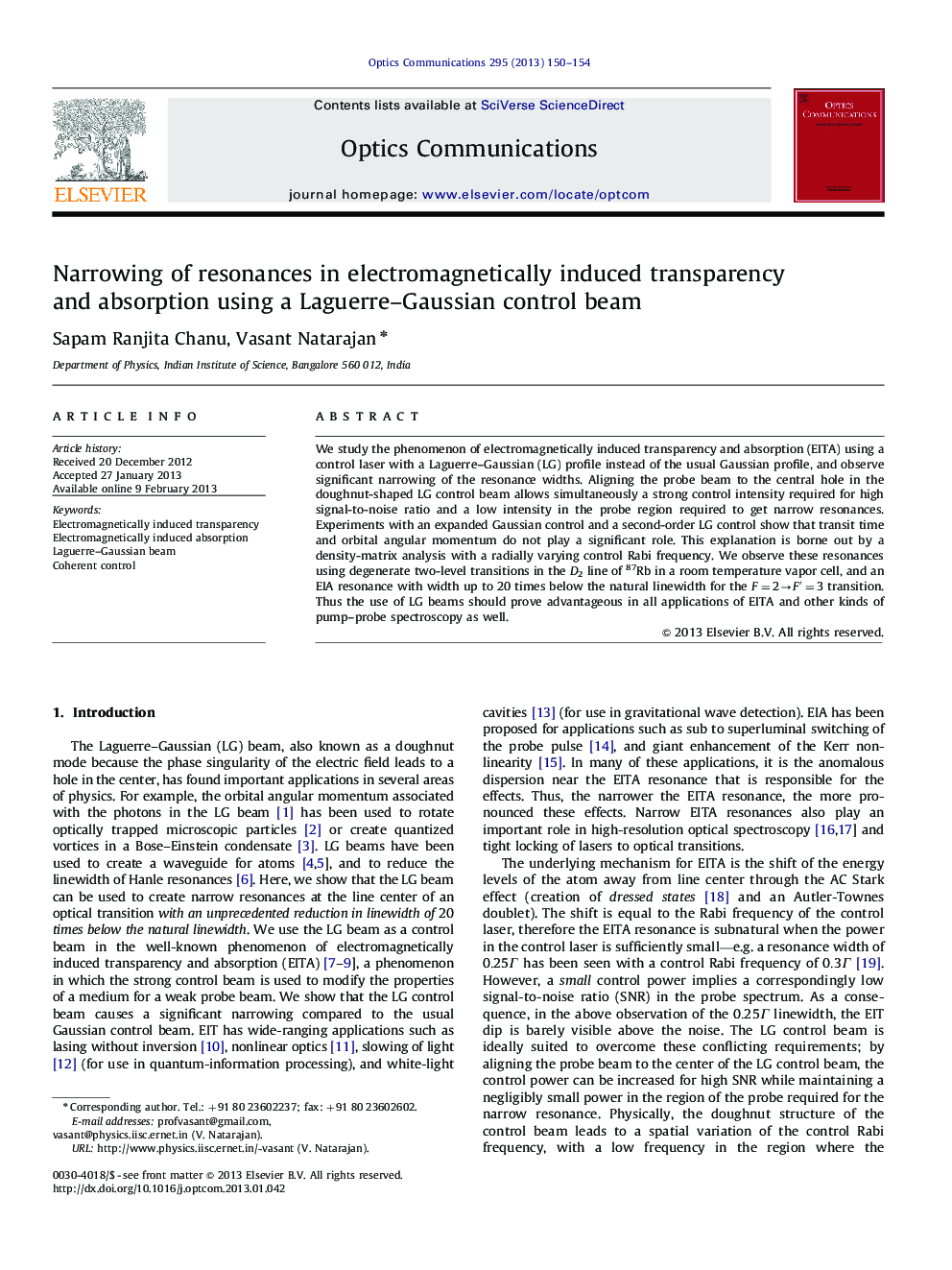| Article ID | Journal | Published Year | Pages | File Type |
|---|---|---|---|---|
| 1535429 | Optics Communications | 2013 | 5 Pages |
We study the phenomenon of electromagnetically induced transparency and absorption (EITA) using a control laser with a Laguerre–Gaussian (LG) profile instead of the usual Gaussian profile, and observe significant narrowing of the resonance widths. Aligning the probe beam to the central hole in the doughnut-shaped LG control beam allows simultaneously a strong control intensity required for high signal-to-noise ratio and a low intensity in the probe region required to get narrow resonances. Experiments with an expanded Gaussian control and a second-order LG control show that transit time and orbital angular momentum do not play a significant role. This explanation is borne out by a density-matrix analysis with a radially varying control Rabi frequency. We observe these resonances using degenerate two-level transitions in the D2 line of 87Rb in a room temperature vapor cell, and an EIA resonance with width up to 20 times below the natural linewidth for the F=2→F′=3F=2→F′=3 transition. Thus the use of LG beams should prove advantageous in all applications of EITA and other kinds of pump–probe spectroscopy as well.
